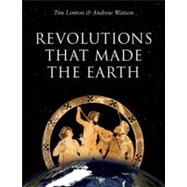
What is included with this book?
| Preface | p. vii |
| List of Abbreviations | p. xiii |
| Introduction | p. 1 |
| Origins | p. 3 |
| Carbon and oxygen | p. 21 |
| Russian dolls | p. 38 |
| The revolutions | p. 44 |
| Theory | p. 61 |
| The anthropic Earth | p. 63 |
| The critical steps | p. 81 |
| Playing Gaia | p. 104 |
| The oxygen revolution | p. 143 |
| Photosynthesis | p. 145 |
| The trial of the oxygen poisoners | p. 165 |
| The Great Oxidation | p. 183 |
| The complexity revolution | p. 209 |
| Life gets an upgrade | p. 211 |
| When did eukaryotes evolve? | p. 229 |
| The not-so-boring billion | p. 242 |
| The Neoproterozoic | p. 262 |
| Interlude | p. 293 |
| Animals and oxygen | p. 295 |
| The grand recycling coalition | p. 311 |
| Rolls of the dice | p. 330 |
| A new revolution? | p. 349 |
| Climate wobbles | p. 351 |
| The origins of us | p. 363 |
| Review | p. 387 |
| Where next? | p. 393 |
| Index | p. 415 |
| Table of Contents provided by Ingram. All Rights Reserved. |
The New copy of this book will include any supplemental materials advertised. Please check the title of the book to determine if it should include any access cards, study guides, lab manuals, CDs, etc.
The Used, Rental and eBook copies of this book are not guaranteed to include any supplemental materials. Typically, only the book itself is included. This is true even if the title states it includes any access cards, study guides, lab manuals, CDs, etc.